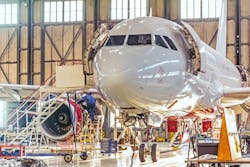The ins and outs of nondestructive testing
FORT ATKINSON, Wisc., - Nondestructive testing (NDT) is the acquisition of information about conditions and defects in a material, part or structure without damaging it or rendering it unfit for service. NDT is one of the foundations of safety for the aerospace and aviation industries. In this feature, we have reached to Roger Engelbart, from the board of directors of the American Society for Nondestructive Testing, to assess how NDT has evolved in recent years, what the newest NDT technologies are, and how an aircraft maintenance, repair and overhaul (MRO) organization can become NDT certified, Mario Pierobon reports for Aircraft Maintenance Technology. Continue reading original article.
The Military & Aerospace Electronics take:
22 November 2022 - According to Engelbart, in the aircraft and aerospace industries, it is vital to detect damage to materials and components at any point in their operational life.
“Radiography is one such way to do so. This technology is not new, but significant advancements have been made in recent years to improve the timeliness and quality of the finished product,” he said.
Digital radiography is an advanced form of x-ray technology where radiation is emitted from the source strikes a detector in place of the film, creating an electronic image sent directly to a computer, explains Engelbart.
“This can be adjusted for brightness, contrast and other parameters, eliminating the need for expensive and time-consuming re-shots. As an example of the use of this technology, ASTM International has developed standardized digital reference radiographs for aluminum and magnesium castings,” he said.
Related: Boeing commits to SAF purchase for commercial uses
Related: Flightline test equipment in the SWaP era
Jamie Whitney, Associate Editor
Intelligent Aerospace
